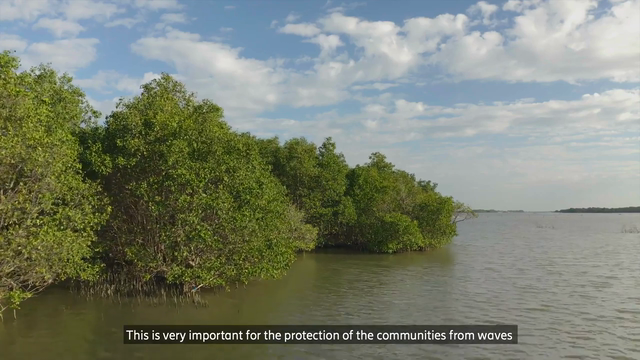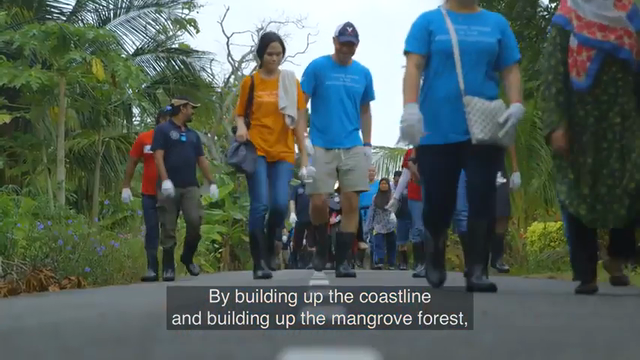Continuing the Journey to Protect the Mangroves in the Philippines: AI Solutions Show Promise in Wildlife and Site Protection
By Ellen Alarilla
Originally published by Ericsson.
It was in 2017 when we first visited the town of Sasmuan in Pampanga, Philippines, to evaluate the mangrove site in Bangkung Malapad for our Connected Mangroves project. We wanted to replicate the success of the Connected Mangroves project that we had done in 2015 in Malaysia, and so we set out to install soil and water sensors and a CCTV camera onsite. The data and the images from the site allowed the community to better manage the area, and it drew great public interest to these wetlands.
These coastal wetlands include mudflats, mangroves and riverine habitats that serve as important stopover points for migratory waterbirds on the East Asian-Australasian Flyway. As such, protecting Bangkung Malapad was critical towards maintaining the biodiversity of the area, providing a natural barrier against typhoons, flooding, and other natural disasters, sequestering carbon, and allowing the community to earn from ecotourism.
From 2018 to 2019, together with our customer partner for the project, Smart Communications, Ericsson worked with the community to identify how the sensors and cameras were supporting them in their daily work of protecting the mangroves. The cameras, they said, helped to reduce incidences of unauthorized visits to the site. And as people became aware that the site was being monitored, they also became more educated on how they could act more responsibly. It was also in 2019 when the community, together with other partner organizations who were experts in mangrove conservation, decided that the main focus would be on-site protection, rather than re-planting mangroves. Experts had determined that the location of Bangkung Malapad, located at the mouth of the Pampanga river, meant that water flow should be unimpeded by mangroves at some points. We then worked together with the community to identify how we could support with enhanced site protection.
In January of 2019, we were greeted with the news that an endangered species of bird not seen in the country in the last 100 years, the black-faced spoonbill, was sighted in Bangkung Malapad. We were very glad to see it reported as news in the country’s leading news daily, as it served to further bolster the community’s efforts to secure this site as a wetland of international importance. In their application to be recognized as such, the community cited the Connected Mangroves project as proof of the site’s relevance, given that organizations such as Ericsson and Smart were supporters of the project. Notably, the spoonbills were seen again in larger numbers the following year.
What’s happened since?
While the COVID-19 pandemic prevented us doing more work on the site in 2020, in early 2021, Bangkung Malapad was finally named as the Philippines’ 8th Ramsar site (site 2445), earning the designation of “wetlands of international importance”. It was cause for celebration as this meant that the site would have increased protection from the local government.
Since the focus of the site had shifted to protection, we wondered: what other technology could we use? And then we thought: could we train AI cameras to help the community with the annual migratory bird census? We worked with our AI team in MOAI to test this, and the answer was a resounding yes. The cameras were accurate in identifying the species of the birds from the protected site using test photos, and we know that they will only get better as they encounter more and more images and receive feedback on the accuracy of their identification.
Today, we are in the process of installing the AI cameras in Sasmuan and we are excited to see how this could contribute towards biodiversity protection and conservation efforts. We have also been approached by our government partners to study the possibility of using AI to help with phenology, or the cyclical biological events in the course of the lifetime of the mangrove trees. The aim of the study is to collect information that would tell forestry experts when the right time would be to collect seeds from the mangrove trees, which would be used in turn for re-forestation efforts across the country.
We are very excited to see what the AI cameras will see, as this will give us more insight into the success of site protection efforts, and will allow us to get a closer look into the life of the mangrove trees. They contribute so much in terms of helping to mitigate climate change, ensuring the balance of the ecosystem, and protecting the lives and livelihood of the communities that live near them, so we’re happy to have been able to continue on this journey to protect them, together with our partners and the community of Sasmuan.
And we’re happy that we’re not alone in our commitment to using technology to support the environment. Our work with protecting mangroves is now part of 1t.org—a platform dedicated to conserving, restoring and growing 1 trillion trees by 2030. 1t.org is part of the World Economic Forum’s efforts to accelerate nature-based solutions and was set up to support the UN Decade on Ecosystem Restoration 2021-2030.
One last story: when we first visited the site in 2017, we also went to visit the town church, built in the 1800s, considered to be one of the oldest churches in the area. We were delighted to learn that their patron saint is St. Lucy (Sankta Lucia as she is known in Sweden). It wasn’t lost on us that she is considered as the patron saint of the eyes –we like to think that the AI cameras will be an added set of eyes to the community, as they continue their important work in protecting the mangroves.
Learn more
Read Ellen’s previous blog post on the Connected Mangroves reforestation project.
Learn more about Ericsson and sustainability.



